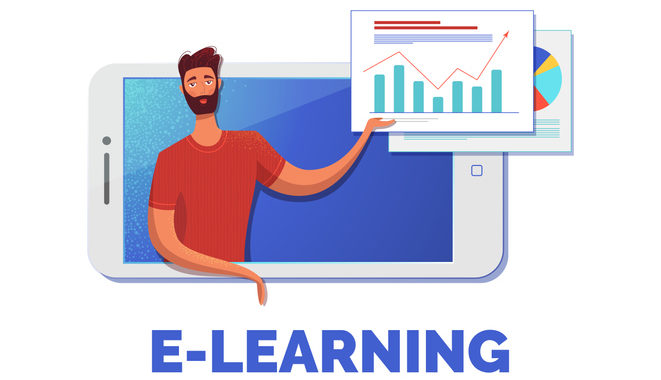Global Live Streaming for Education and E-Learning
The great Nelson Mandela once said, “Education is the most powerful weapon which you can use to change the world.” In line with that thinking, this blog post will look at the use of live video streaming for education and e-learning.
In recent years, we’ve experienced major changes in the world of information. Starting in 2015, young millennials (ages 14-25) began watching more video on digital devices than on television. The trend has continued into the present. Today, the numbers are even more skewed in terms of Millenials’ video viewing habits. Simply put, young people are using video for everything. And that includes education. According to research, video use in education can be “highly effective.“
Below, we’ll begin this post by first looking at how educators are using live streaming video. Then, we’ll cover a range of reasons why live streaming for education can improve student learning, aid teachers, create global communities of learners, and more. Let’s jump right in!
How universities, schools, and businesses are using live video

Education as a whole is booming. Globally, the number of students enrolled in higher education has more than doubled since the year 2000. As a growing number of digital natives have moved into schools, video use has risen as well.
In short, live streaming for education is more prevalent today than ever before. Today, “video is becoming as ubiquitous in classrooms as laminated periodic tables and whiteboards.” In 2016, for example, 52 percent of universities surveyed used video streaming solutions. That number is rapidly approaching 100 percent as we write this post.
To that point, Dacast has a wide range of users implementing educational videos. These include:
- The CME (Continuing Medical Education) provider MorningCME
- Striv.TV, which provides live streaming services to 80+ high schools
- Hemingway Elementary, which requires students to produce and host daily broadcasts for their school
With those trends and use-cases in mind, let’s turn to how live streaming for education can improve student learning outcomes.
Live streaming for education improves student learning
Here’s the main question. Does the use of live streaming for education improve outcomes? Luckily, the data is clear. A full 88 percent of universities have reason to believe that video increases student achievement levels.
According to one review of the scientific research, the benefits of using online video for education include:
- Enhanced “comprehension and retention of information”
- Support for “multi-modal” learning
- Appealing to multiple learning preferences
- Helps students to understand complex information
- Develops digital literacies
A related survey found comprehensive positive benefits as well. In this study, the use of video for education increased student satisfaction with the learning experience (93% agreed). Video increased student achievement (85% agreed). Video also improved graduate affiliation with the school (70%).
Overall, online learning gives students the flexibility to take classes at their own pace. After the live stream, most educational institutions also save the video on demand (VOD). That way, students can rewind to the parts of the lesson which they found more difficult than the rest.
- According to the Research Institute of America, online learning has the power to increase retention rates by 60%.
- A study by IBM found that virtual students cover 5 times more course material than traditional students in the same time-frame.
- Compared to instructor-led training, online learning can lead to a 60% faster learning curve.
We can also observe the popularity of online education in the increase of students enrolled in MOOCS. At edX alone, 2.5 million students are currently enrolled in their online courses. About 1 million come from developing countries. These students appreciate the high-quality instruction from top universities, especially because brand-name schools are very important in certain societies.
Teachers love live streaming

What about the teachers? Video works great for students, and it turns out that teachers appreciate it too! According to the Public Broadcasting Service’s (PBS) annual teacher survey on technology and media, teachers think online video learning has been “a great tool.”
Research conducted by Cisco indicates that about two-thirds of teachers agree that video education helps students learn. Live streaming can also help to make teachers more creative. With live video, you can use richer content to present your lessons. You have the flexibility to use different forms of content and presentation methods such as pictures, text, live chat, music, interactive activities, and others. In fact, it’s almost as if you’re in a real classroom.
The Cisco research also asked teachers about video in the classroom. Their responses showed that:
- 68% believe that video stimulated discussions
- 66% believe that video increased student motivation
- 61% believe that video is preferred by students
It’s common to assume that live streaming takes away the quality of a real-world classroom setting. On the contrary, however, 77% of academic leaders believe that online learning is equal or superior to traditional classroom teaching.
Reaching a global audience

In large parts of the world, quality education is hard to find. Many students from developing nations don’t have access to good schools or teachers. In recent years, online education has helped bridge the gap between quality education and global students.
Indeed, the internet has made it possible to break down geographical barriers. If you’re live streaming an educational video, for example, you could be teaching students from all over the world. Your virtual classroom can comprise students from South Africa, Argentina, Canada, or Thailand.
In the live streaming for the education world, massive open online courses [MOOCs] have found great success globally. They have leveled the playing field for developing countries in terms of access to quality educations. Schools such as Cornell, Harvard, and Stanford have been offering online education to deserving but underprivileged students from poorer nations. Popular MOOC providers include edX, Udacity, and Coursera.
For example, Duke University has been providing online distance learning to students worldwide for a number of years. Seventy-four percent of their total MOOC students come from outside the USA.
Important features for educational video

Because of the worldwide appeal of online education, it’s important to have a reliable streaming provider. A good streaming platform, or Online Video Platform (OVP), can provide the tools and reliability necessary for educational use.
For example, a good streaming platform will have a content delivery network (CDN) to distribute your video content. A good CDN will make sure that your video is delivered across networks all over the globe without buffering, lag, or other quality issues.
Here are some other common features to look for in an online video education platform:
- Video monetization tools to make money on video content
- Analytics to track usage and statistics
- Mobile apps / SDKs to enable mobile viewing
- Custom video portals to host and organize content
- Chapter markers to split up longer content into digestible, navigable chunks.
- 24/7 customer support to solve technical issues
- Closed captions to ensure compliance with laws and reach all students, plus make content more accessible for ELL students.
Conclusion
Online classes have the power to change the world by offering education to almost anyone. It used to be the case that great education is reserved only for those who can afford it. The advent of the internet has allowed nearly everyone to access the world’s knowledge. Now we can all contribute to the advancement and betterment of our society. And one way to do just that is through live streaming for education, the focus of this post.
Dacast is an online video platform that provides live and on-demand video hosting to business clients around the world. Our network is built around the rock-solid Akamai CDN (Content Delivery Network). This top-tier global server infrastructure ensures that all your video content reaches your viewers as rapidly as possible. Plus, we offer all the advanced features discussed above, and more, at the best competitive prices on the market.
If you’re ready to try live streaming with our OVP today, Dacast offers a 14-day free trial (no credit card required). Click the button below to start streaming live today!
Still have questions about live streaming for events, Dacast as a streaming provider, or online video in general? Feel free to contact us, or drop us a line in the comments below. We will get back to you. And for live streaming tips and exclusive offers, you’re invited to join our LinkedIn group.
Thanks for reading!
 Stream
Stream Connect
Connect Manage
Manage Measure
Measure Events
Events Business
Business Organizations
Organizations Entertainment and Media
Entertainment and Media API
API Tools
Tools Learning Center
Learning Center Support
Support Support Articles
Support Articles
